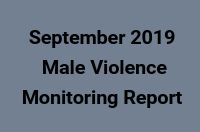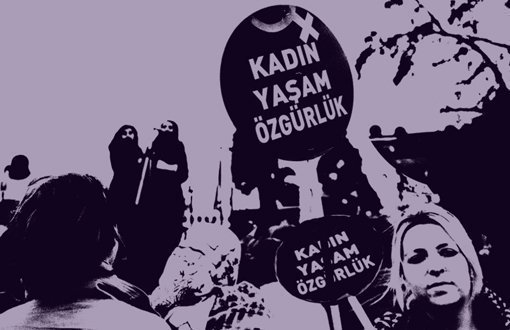Click to read the article in Turkish/Kurdish
According to reports bianet compiled from local and national newspapers, news sites and agencies, men killed at least 23 women and two girls; raped four women; forced 24 women to sex work; harassed 22 women; sexually abused 19 girls; inflicted violence on 36 women in September.
Other than these murders, perpetrator of murder of a woman who is citizen of Georgia is yet to be found, another woman was found suspiciously dead in Antalya. It was determined that murderer of Moldovan Tatiana A. who was killed in İstanbul in February was son of a friend of hers.
Men killed at least 183 women and 10 children; raped 50 women; harassed 162 women; forced 375 women to sex work; sexually abused 279 girls; injured 316 women in 2018.
Homicide
Men killed at least 23 women, two girls and four men in September.
22 percent of the women were killed for attempting to break up or divorce, or rejecting the proposal to recommence the relationship. One woman was murdered by husband of her daughter who attempted to divorce.
17 percent of the murders were committed despite protection order. Two of the murdered women had filed complaint numerous times and had protective order issued.
69.5 percent of the women were killed by their husbands or boyfriends:
10 women were killed by their husband; four by their boyfriend; one by her ex-husband, one by her father and elder brother, one by the husband of her daughter who attempted to divorce, two by their renters, two by male strangers whose car they got in.
56.5 percent of the murders were committed with firearms;
Nine women were killed with gun, four with rifle, four with knife, four by being choked, one by torture, one by being burned to death with oil.
22 percent of the murders were committed in public places such as street, café, in front of courthouse, 13 percent in private places.
One of the murdered women was from Morocco.
Three murderers committed suicide, two attempted suicide, two gave themselves up after the murders.
Two of the perpetrators had stayed in prison for committing femicide in the past.
The cities where femicides took place are Adana (1), Adıyaman (1), Aksaray (2), Ankara (1), Bursa (1), Denizli (2), Iğdır (1), Isparta (2), İstanbul (3), Kırklareli (1), Kocaeli (1), Maraş (1), Mersin (2), Muğla (1), Trabzon (1).
Rape
Four rape incidents from four cities were reported in the media in September.
One of the perpetrators was neighbor; one employer; one relative; one a man the woman knew.
One of the raped women was from Syria and another one from England.
One of the perpetrators had left the prison on permission in England and come to Turkey on holiday.
Judicial processTwo of the perpetrators were arrested, two others were only detained. |
Sex work by force
24 women were forced to sex work in Balıkesir, Antalya and İstanbul in September.
66 percent of women were not citizen of Turkey. One of the women from Turkey was with disabilities.
Judicial processOnly two of 13 perpetrators one of whom were a woman who forced women to sex work were arrested in September. Three perpetrators were taken into custody. Legal proceeding concerning the other eight perpetrators wasn’t covered by the media. |
Harassment
22 harassment incidents were reported in the media.
82 percent of the perpetrators were male strangers.
18 women were harassed by male strangers, one by her relative, one by a waiter in a restaurant, one by a coworker, one by a stalker.
Two women were subjected to exhibitionism, two to peeping.
Two of the harassment incidents occurred on public bus.
One of the harassers had a criminal record of harassment in the past.
Judicial process Only four of the 11 offenders were arrested. One offender was released on probation. After no legal action was taken against the offender, the woman denounced the man on social media. In a harassment incident that took place at school, the school administration did not launch an investigation despite the complaints of the woman; the woman, then, applied to the Governorship. While it was reported in the news that one harasser was taken into custody, the judicial processes of the other 3 offenders were not reported in the news. Two harassers were battered by the men who witnessed the harassment on the street. |
Child abuse
In September, men sexually abused at least 19 girls.
Two of these girls were forced to sex work. One girl was abducted by a relative of hers, who wanted to marry her, for six months. A 14-year-old girl got pregnant as a result of abuse. Two of the offenders were the relatives of the girls, two offenders were their fathers, one offender was a shopkeeper, two offenders were male acquaintances from the neighborhood/village where they live, one offender was the helper of a bus driver and four offenders were male strangers. In one case, the offenders were the relatives and the son-in-law, who forced the girl to marriage. In six cases, the degree/form of acquaintance between the offenders and children was not reported in the news.
One of the girls was with disabilities. One of them was a refugee from Syria.
Judicial process 11 of the 27 offenders were arrested. One offender was released on probation. Five offenders were released after their testimonies. No legal action was taken against the helper of a bus driver who abused a girl from Syria. It was only reported in the news that seven offenders were detained; three of these offenders were the parents and son-in-law who forced a girl to marriage at a young age. The judicial processes of two offenders were not made news. Five of the offenders were subjected to violence by the people who were around or by the relatives of the girl who was subjected to abuse. |
Violence – injury
Men inflicted violence on at least 36 women in September. At least six of these women were seriously injured. Three women were subjected to violence because they demanded divorce/separation. In one case, the complaint of the woman did not bear any results, the prison sentence previously given to the offender due violence was not put into effect. Three of the women who were subjected to violence in September were transgender women. 44 percent of the women were subjected to violence by their partners:
13 women were subjected to violence by their husbands; one woman by her husband of religious marriage; two women by their ex-husbands; three women by their lovers; one woman by her sports trainer; two women by their fathers; two women by shopkeepers; one woman by the husband of her sister; two women by their fathers-in-law; one of them by her son; one woman by the man, whose relationship proposal she had rejected; three women by their male acquaintances/friends; and three men by male strangers. In one case, the form/degree of acquaintance between the woman and offender was not reported in the news.
Two men who inflicted violence on three women in total were professional soldiers.
23 soldiers were battered; five of them were injured with knives or similar sharp objects; one woman was subjected to torture; five women were injured with a gun. One offender raided the house of the woman, opened fire with a rifle, but no one got wounded. One offender took his lover captive.
16 percent of the violence - injury cases took place in public places. Two violence incidents happened in traffic, in private vehicles and one of them took place in a bus.
Judicial process Only four of the 36 offenders were arrested; a verdict of suspension was issued for one offender. One offender was released after his testimony. No legal action was taken against three offenders. Two offenders filed a criminal complaint against the women, whom they subjected to violence. The only news reported in the media about 15 offenders was that they were taken into custody. One offender committed suicide; one offender was killed by the father of the woman, whom he subjected to violence. The judicial processes of eight offenders were not reported in the news. |
(ÇT/TK/SD)
Explanation The bianet Male Violence Monitoring Report only covers women who lost their lives as a result of male violence. We do not take include any violence cases or crimes that are not gender-based. Throughout the year, we keep track of unidentified murders and suspicious deaths of women in separate monthly tallies but do not add them to the number presented in the headline. At the end of the year, we examine these cases of unidentified murders and suspicious deaths to determine whether the crimes were gender-based. In time, when we come to the conclusion that a crime is gender-base, we include it in the end-of-year tally. We do not include any murders in the reports that are committed by people with psychological disorders (such as murders committed by people with schizophrenia). In addition, we don't include femicide cases that occur in a mass murder in which the woman was not directly targeted under the condition that the debated incident is not gender based either. For example, following case from June 11, 2017 was not included in our male violence report: * A.K. (27), a rancher in Konya province killed his relatives Bekir Kıran (80/male), Mustafa Tokat (80/male), Meryem Tokat (79/female), Hamit Tokat (51/male) and Mehmet Tokat (64/male) with a barreled-gun. He was caught on the way home after committing the murders. It was reported, that A.K. had schizophrenia and considered the villagers responsible for the death of his father, who had lost his life after a heart attack. The occupational groups mentioned in the report, only cover cases in which the occupations have relevance for the act of violence. * Example: "The expression "x% of the rapists were drivers",imply that the woman was raped by the driver of the (public) transportation vehicle she used. |





.jpg)





